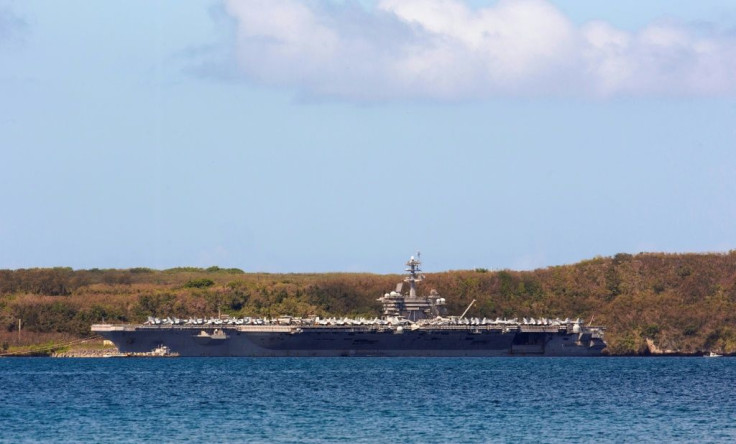US Navy Carrier Roosevelt Back At Sea Amid South China Sea Tensions
KEY POINTS
- During a scheduled deployment in March, USS Theodore Roosevelt was forced to dock in Guam due to a COVID-19 outbreak on board
- More than 1,000 sailors were infected during the outbreak
- Fifty five days after the March 27 docking, the USS Theodore Roosevelt left Guam and is in the Philippine Sea to conduct basic drills
The United States often runs “freedom of navigations” operations in the South China Sea to ensure the international waterway remains open and to keep an eye on China’s activities in the same waters. Their presence provides a balance of power for the other Asian countries bordering the sea, which creates some added tensions between the world's two largest economies.
The U.S. has no territorial claims in the Asian Pacific region except for Guam and the Northern Mariana Islands. They do, however, base their 7th Naval Fleet in Yokosuka, Japan.
In March, the U.S. Navy aircraft carrier USS Theodore Roosevelt, based in San Diego, was on a scheduled deployment to the 7th Fleet when a COVID-19 outbreak on board forced the ship to dock in Guam. Nearly 4,000 sailors were moved off the ship while it was cleaned, with the disease ultimately infecting more than 1,000 sailors.
Fifty five days after the March 27 docking, the USS Theodore Roosevelt left Guam and is in the Philippine Sea to conduct basic drills that will allow the crew to ramp up the use of the carrier after the nearly 8-week layover.
Captain Carlos Sardiello, the ship’s commanding officer, said in a statement the drills will be run with a partial crew because the qualification flights “requires fewer personnel than other missions, and bringing fewer sailors on board will enable enhanced social distancing while underway.”
Before the emergence of the COVID-19 pandemic that originated in the Chinese city of Wuhan, Washington and Beijing were embroiled in a trade war that was affecting the global economy. When the outbreaks spread to Europe and the U.S., China stepped up its activities in the South China Sea, appearing to take advantage of the weakened and distracted the U.S. forces.
During an interview with Fox News on Tuesday, Reed Werner, the deputy assistant secretary of defense for Southeast Asia said there had been "at least nine" concerning incidents involving Chinese fighter jets and the U.S. aircraft in the skies above the contested waterway since mid-March. He explained further China continued to engage in "risky and escalatory behavior."
The U.S. did not stand idly by as the pandemic ran its course. In March and April, navy vessels conducted three freedom of navigation operations (FONOPS), challenging China's territorial claims to the Paracel and Spratly Islands in the South China Sea.
The U.S.' activities also included multiple presence operations and joint drills with other nations using navy warships, including the large amphibious assault ship USS America. Air Force B-1B Lancers carried out two strategic bomber patrols.
After one FONOP, Senior Colonel Li Huamin, spokesman for the People's Liberation Army's Southern Theater Command, said the U.S. should focus on fighting COVID-19 rather than conducting military operations.
The Trump administration, often criticized for its handling of the coronavirus at home, has also not been shy about denouncing China's missteps with the early stages of the outbreak, asserting the Asian country allowed it to evolve into a global crisis.

© Copyright IBTimes 2025. All rights reserved.





















